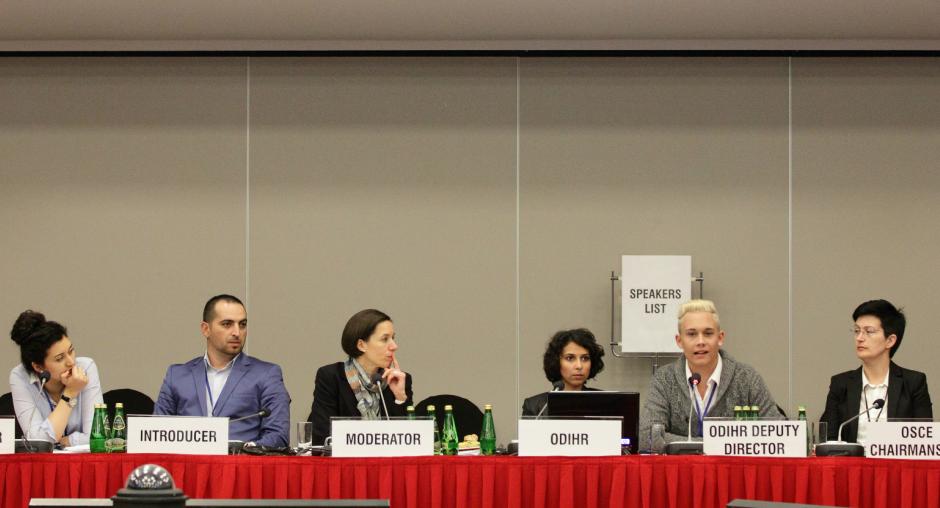Report on Roma and Sinti youth released at OSCE/ODIHR event in Warsaw

Roma and Sinti youth have the potential to become active and engaged citizens, according to the new report Activism, Participation and Security among Roma and Sinti Youth, launched on 1 October 2015 during the Human Dimension Implementation Meeting in Warsaw.
The report by the OSCE Office for Democratic Institutions and Human Rights (ODIHR) presents the findings of the Roma and Sinti Youth Conference: Activism, Participation, and Security, which was organized by ODIHR and Serbian authorities in Belgrade in 2014 and brought together young Roma and Sinti from 17 OSCE participating States.
"Addressing the situation of Roma and Sinti youth is in line with the OSCE commitments made in the 2003 Action Plan on Improving the Situation of Roma and Sinti in the OSCE region and further reinforced by the 2013 OSCE Ministerial Council Decision focusing on Roma women, youth and children," said Mirjam Karoly, ODIHR Senior Adviser on Roma and Sinti Issues. "Nevertheless, exclusionary mechanisms in education and employment stop many young Roma and Sinti from developing to their potential."
Participants in the launch event also highlighted the importance of involving youth from Roma and Sinti communities in public and political life. Silas Kropf a young Sinti activist from Germany said: "We have to raise awareness, to empower young people to fight discrimination and to be active citizens in their countries."
The role of young Roma and Sinti women was among the main topics of the discussion.
"I am firmly convinced that Roma and Sinti women are key to bringing necessary change," said Anina Ciuciu, a young Roma woman activist living in France. "We must be creative to build a new and inclusive society, truly united in diversity, as we have in our own communities."
The new report gives an overview of the Belgrade conference discussion and recommendations, and features six background papers prepared by young Roma and Sinti activists and scholars. It also offers important new statistical data on the situation of Roma youth in 12 OSCE participating States in the areas of access to education, employment, personal documents, social and health care, as well as discrimination.
